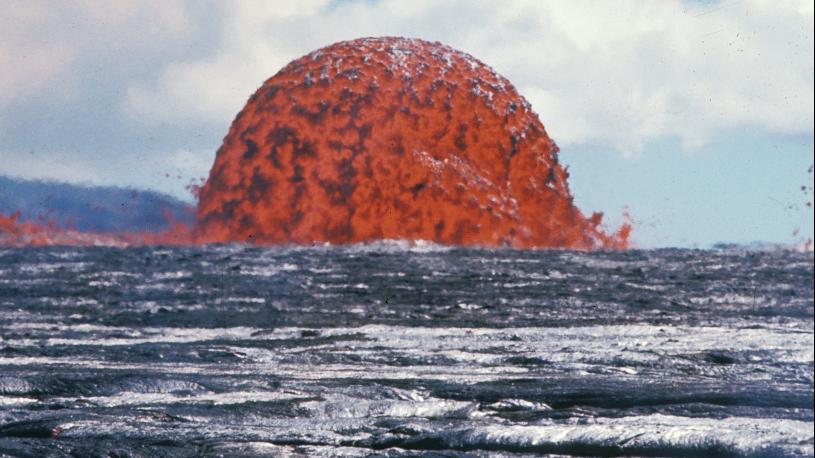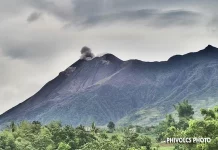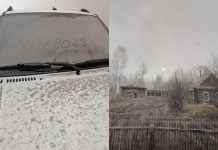Volcanic eruptions are spewing large plumes of gas and ash in the sky sometimes disturbing aircrafts.
A new study shows that when the mostly underwater Bogoslof volcano in the Aleutian Islands erupts, it produces giant bubbles filled in volcanic gases that can reach up to 1,444 feet (440 meters) across. Now imagine the volcanic clouds such bubbles create!

In the early 20th century, sailors near Alaska reported seeing black bubbles seeming to boil out from the sea, each one the size of the dome of the capitol building in Washington, D.C.
They weren’t the only sailors who reported the bizarre phenomenon, and they weren’t mistaken, except for one thing… the bubbles were much larger.
When the mostly underwater Bogoslof volcano in the Aleutian Islands erupts, it produces giant bubbles that can reach up to 1,444 feet (440 meters) across.
These bubbles are filled with volcanic gas, so when they burst they create volcanic clouds tens of thousands of feet in the sky.
These volcanic clouds were captured in satellite images taken after the Bogoslof volcano last erupted in 2017 — but the bubbles themselves were never photographed.
Discovery Linked To Infrasounds
During the time of the eruption, a dull hum lingered in the air. Something was giving off low-frequency signals called infrasound — sounds below the level that humans can hear — that would last up to 10 seconds. Lyons and his team, who regularly monitor active volcanoes in Alaska, picked up on these signals in their data. But “it took us a while to figure out what they were.”
It was only after searching the literature that the team came up with their hypothesis that the sound was the whisper of giant gas bubbles growing within the magma of the erupting volcano.
So What Is Going On
In their model, a bubble bursts out from the column of magma underwater and begins to grow. Once it reaches the sea surface, it juts out in the shape of a hemisphere and continues to grow at an even faster rate in the lower density of the atmosphere. Eventually, the pressure outside the bubble exceeds the pressure inside and the bubble begins to contract; its film becomes unstable and ruptures, causing the bubble to burst.
When it bursts, volcanic gas — water vapor, sulfur dioxide and carbon dioxide — gets released partly back into the water, where it interacts with the lava, pulling it into pieces and producing ash and volcanic clouds.
The team hypothesized that the low-frequency hum emanates from the growth and oscillation of each bubble and the high-frequency signal represents the burst.
These shallow explosive submarine eruptions are so rare. There’s a lot of undersea volcanism, but the majority of it happens under lots and lots of water very deep and all that extra pressure tends to suppress how explosive eruptions are. [LiveScience]












